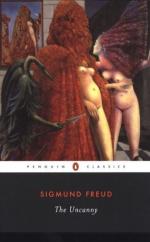
|
| Name: _________________________ | Period: ___________________ |
This test consists of 15 multiple choice questions and 5 short answer questions.
Multiple Choice Questions
1. What happens when the forces coexist in the case of a childhood memory?
(a) The memory is erased.
(b) The memory is preserved.
(c) The memory is shattered.
(d) The memory is void.
2. What are Henri and the person in his dream given?
(a) Water.
(b) Bread.
(c) Milk.
(d) Honey.
3. Why might a random scene appear to be important to an individual?
(a) Because it is detrimental to the shape of us an individual's.
(b) It does not appear important.
(c) Because of the literal association of one's psychology.
(d) Because of the abstract association to one's psychology.
4. Who did Henri stay at the countryside with?
(a) His sister.
(b) His cousin.
(c) His uncle.
(d) His grandparents.
5. What does the little girl represent in Henri's adolescent memory?
(a) His desire.
(b) His cousin.
(c) His incest.
(d) His love.
6. According to Freud, what do childhood memories appear to be?
(a) Literal.
(b) Emotionally important.
(c) Emotionally unimportant.
(d) Subtle.
7. According to Freud, what is the childhood psyche substantially different from?
(a) The adult psyche.
(b) Real life.
(c) Projections.
(d) The adolescent pysche.
8. What does the ego have during day and night dreams?
(a) Subconscious insight.
(b) Free reign.
(c) Conscious insight.
(d) Total control.
9. Who are V. and C. Henri?
(a) An example of healthy daydreaming.
(b) An example of childhood memory distortion.
(c) An example of dependency.
(d) An example of neurosis.
10. What is the basis of Freud's essay, "Creative Writing and Daydreaming"?
(a) To have the opportunity to write creatively.
(b) To better understand the genesis of the creative process.
(c) To understand how writing and dreaming manifested.
(d) To daydream.
11. Who does the person in Henri's dream run to?
(a) Her mother.
(b) Her father.
(c) Her grandmother.
(d) No one.
12. How does Freud see a person's dreams at night?
(a) Opportunities for the unconsicous mind and the id to fulfill their desires.
(b) A path to an opportunity of reality.
(c) Fantastical realizations.
(d) A break from reality.
13. What can fantasies do for a healthy dreamer?
(a) Stay grounded.
(b) Reach one's dreams.
(c) Think through the possibilities of the future.
(d) Dream big.
14. What does Freud suggest about the memories we recall as adults about our childhood really are?
(a) They are substitutions.
(b) They are projections.
(c) They are distortions.
(d) They are not memories at all.
15. What does Freud find most heroes in fiction really are?
(a) Desires.
(b) Fantastical people.
(c) Fake.
(d) Ego projections.
Short Answer Questions
1. What is the first force Freud mentions is at play in childhood memories?
2. What do most adult memories have, according to Freud?
3. Where does the artist sublimate the actual pleasure of one's dreams into?
4. What age does the creative process especially begin to unfold in a person, according to Freud?
5. What must childhood memories be triggered by, according to Freud?
|
This section contains 494 words (approx. 2 pages at 300 words per page) |

|




